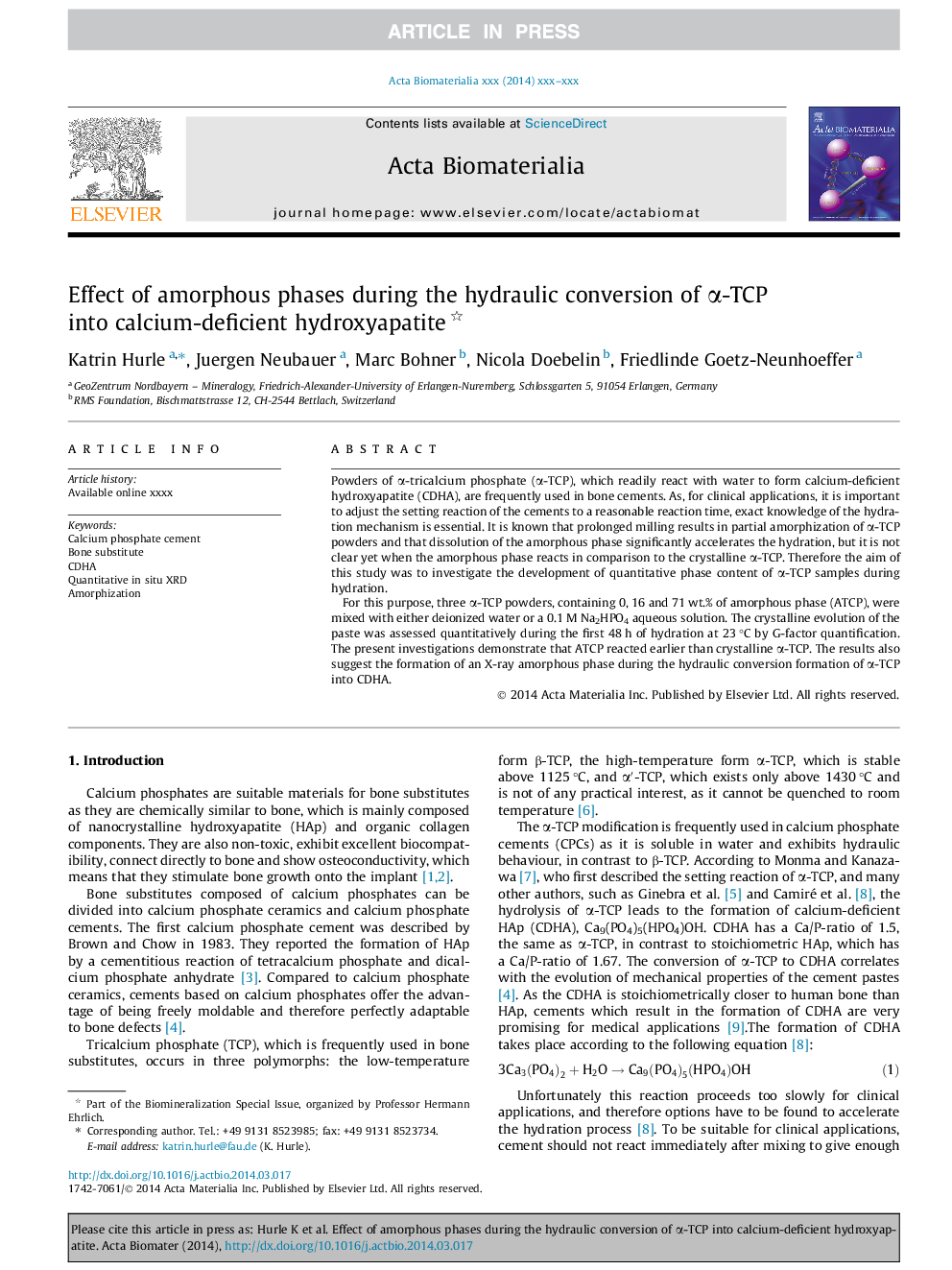| Article ID | Journal | Published Year | Pages | File Type |
|---|---|---|---|---|
| 6482079 | Acta Biomaterialia | 2014 | 11 Pages |
Abstract
Powders of α-tricalcium phosphate (α-TCP), which readily react with water to form calcium-deficient hydroxyapatite (CDHA), are frequently used in bone cements. As, for clinical applications, it is important to adjust the setting reaction of the cements to a reasonable reaction time, exact knowledge of the hydration mechanism is essential. It is known that prolonged milling results in partial amorphization of α-TCP powders and that dissolution of the amorphous phase significantly accelerates the hydration, but it is not clear yet when the amorphous phase reacts in comparison to the crystalline α-TCP. Therefore the aim of this study was to investigate the development of quantitative phase content of α-TCP samples during hydration.For this purpose, three α-TCP powders, containing 0, 16 and 71 wt.% of amorphous phase (ATCP), were mixed with either deionized water or a 0.1 M Na2HPO4 aqueous solution. The crystalline evolution of the paste was assessed quantitatively during the first 48 h of hydration at 23 °C by G-factor quantification. The present investigations demonstrate that ATCP reacted earlier than crystalline α-TCP. The results also suggest the formation of an X-ray amorphous phase during the hydraulic conversion formation of α-TCP into CDHA.
Related Topics
Physical Sciences and Engineering
Chemical Engineering
Bioengineering
Authors
Katrin Hurle, Juergen Neubauer, Marc Bohner, Nicola Doebelin, Friedlinde Goetz-Neunhoeffer,
